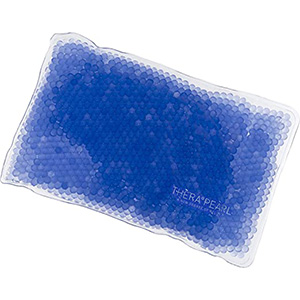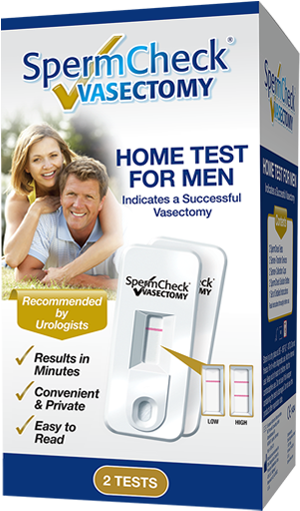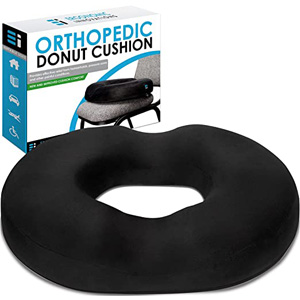If you are considering having a vasectomy, you may be wondering what will happen to you at the time of surgery. This personal account of my decision to have a vasectomy, as well as a detailed description of the surgical procedure itself — a procedure I underwent in the United States in 1999 — is intended to aid your understanding and perhaps ameliorate your fears.
I am a 37-year old husband and father of two wonderful children. My wife and I mutually arrived at a decision for me to have a vasectomy. Our decision for me to have a vasectomy was many-fold. First, we sense that our family is complete and we do not wish to have any more children. Secondly, for medical reasons, my wife cannot use, without significant complications, any form of birth control, including the pill, diaphragms, etc. Thus, during our marriage, the responsibility for birth control has been largely on my shoulders. Our sole means of birth control has been the use of condoms.
Recently, we found ourselves having less sex out of fear that my wife may get pregnant. It seemed that if we were to enjoy one of the many benefits of marriage, namely sex, we had better soon do something about a permanent means of sterilization. The vasectomy procedure, as opposed to tubal ligation for the woman, seemed to be the safest and least invasive procedure. Certainly, a vasectomy is fairly inexpensive. Mine cost USD $500 for the pre-op consult, surgery, and post-op lab work.
Those who are concerned about this procedure may have many more questions about vasectomy than this personal account can possibly address. This website is a good resource for valuable information about vasectomy. Talk to your friends who’ve had a vasectomy and consult a urologist or family physician as I did before undertaking this elective procedure. And always recognize that vasectomy is a semi-permanent means of sterilization in the sense that, once performed, its microsurgical reversal is only about 60% successful.
Obviously, one of the greatest fears most men have about this procedure is the physical pain and perhaps embarrassment involved in submitting to a vasectomy. I asked my physician two days prior to surgery to prescribe 20mg of Valium for me to take on the morning of the surgery. Curiously, he hesitated to do so and would not do so unless I signed the Consent for Surgery in his office the day before my surgery. For possible liability concerns, they do not want sedated patients signing consent. I insisted on the medication, signed the Consent, and was given the Rx. Valium, as an anti-anxiety medication, has a calming and relaxing effect physiologically.
I recommend taking an appropriate dosage of Valium about an hour and a half prior to the procedure, enough time for the medication to be efficacious. Valium takes the edge off any anxiety one may sense going into surgery. 20mg is a high dosage, just enough to make one feel very relaxed and calm.
I was also concerned about the possible embarrassment of going in for this procedure. Would I be attended by female nurses? Would a female nurse perform the pre-op preparations, etc? Fortunately, my urologist employs male nurses to attend their male patients. I felt more at ease being attended by a male nurse.
Before surgery, there are a few things you should do for yourself. Purchase a jock that fits. I did not do this because I didn’t know one was needed and, frankly, I find wearing a jock to be uncomfortable. But you’ll definitely need something for scrotal support after the surgery. Underwear briefs (pants in the UK, I am told) are insufficient for the support you’ll need. Again, buy a jock with a pouch that fits. The jock I was given by my physician after surgery fit me around the waist, but the pouch was too small for my equipment and thus was very uncomfortable.
Secondly, there’s no need to ask your urologist if you can shave prior to surgery. Assume that you can and should. Unless you think it’s a turn on to be shaved by another man (or a female nurse), just assume that you will need to shave yourself. The points you want to remember here are:
Shave yourself the night before surgery; avoid minor cuts to the skin as they can produce infection and inflammation (in which case, your surgeon likely will not proceed with the vasectomy procedure until the skin is healed); avoid razor burn when shaving (again, this produces inflammation of the skin and may result in a delayed surgery). You should shave the dorsal side (underside) of the penile shaft, especially near the base of the penis, as well as the entire scrotum. Use a clear lubricant, such as Astroglide, so that you can see what you are shaving. Shaving cream probably works just as well, but doesn’t provide the best lubrication and certainly obscures one’s view of what is being shaved. The lubrication helps to avoid razor burn and minor cuts. Note: The Astroglide brand product, available at many drugstores, is the best personal lubricant my wife and I have found. It’s not as viscous as K-Y jelly and it lasts forever – very slick, and a great turn on in sex play. In this connection, shaving your penis and scrotum the night before surgery is a real turn on. Why not make it sex play with your spouse?
Another concern about the vasectomy procedure is a possible embarrassment. I am fairly modest and don’t relish the idea of exposing my private parts to others. But the Valium, I think, relieved most of my anxiety about this.
Secondly, I am prone to produce an erection when I lie down, whether aroused or not. I was concerned about developing an unwanted erection during the vasectomy procedure. I don’t know if there is medical research to support this suggestion, but one idea to avoid an unwanted erection under these circumstances is to have sex, or to masturbate, several hours before the vasectomy procedure. Now concerning the procedure itself.
I talked to several of my friends who have vasectomies. Two of them indicate that the injection of the anesthetic by syringe and needle is the most painful aspect of the procedure. My experience in surgery leads me to agree. But they are completely misguided in suggesting that the injection of anesthetic is made directly into the testicles. Let me assure you that the testicles are not injected with anesthetic. Only the scrotal skin and vas deferens themselves are injected.
This is how I experienced my vasectomy at the urologist’s office on the day of surgery. Once in the surgical suite or examination room, the nurse asked if I needed to visit the restroom. Then he asked me to remove my shoes, trousers, and underwear and indicated that I could leave my shirt and socks on. At that moment, I informed the nurse that I had shaved myself the night before. He said that was acceptable and later commented, upon examining me, that I had done a good job of preparing the area. I was then asked to lie down on the operating table. I found it a great comfort at this time that the nurse immediately covered my waist with a large, sterile sheet. Then the nurse informed me that he was going to wash my genitals with warm, soapy water, which he did with gloved hands. He lifted and folded across my waist the sheet covering me. He then swabbed the penis and scrotum with a soapy wet sponge, rinsed the area, and then blotted the area dry. Then he informed me that he was about to apply Betadine (a dark orange antiseptic solution) to my genitals. He then handled the penis and scrotum in such a way as to swab the entire area with Betadine. All was done very discretely and without comment. There was minimal handling of my equipment by the nurse preparing me for surgery. I had the sense that the nurse was very respectful and discrete about handling me. Thus, I was prepped for surgery. The nurse covered my exposed genitals with a smaller sterile sheet and informed me that the surgeon would be in shortly.
The surgeon shortly arrived in the examination room and adjusted the overhead light and instrument table. He then put on latex gloves and removed the top sheet from my waist. At this point, let me deviate briefly and say that the surgeon did not put on, or ear during the surgery, a sterile facial mask as surgeons should do for any surgical procedure. This clearly is a departure from generally accepted medical practice and could result in the patient’s developing an infection. My surgeon was also chewing gum during the entire procedure; so it is possible that his saliva could have transferred to my open incision and produce an infection postoperatively. Fortunately, that did not happen in my situation. If your surgeon neglects to put on a surgical mask, respectfully ask him to do so before going under the knife. One should not be too passive with physicians and healthcare providers when it comes to maintaining your valuable health. The physician-patient relationship should be collaborative.
The surgeon then unfolded three or four small sheets and draped them across my waist in such a way as to leave exposed only my penis and scrotum. Then he covered my penis with a separate sterile sheet so as to leave exposed only the scrotal area. He then manipulated the scrotum and my testicles by hand so as to locate the vas deferens on either side of the scrotum. Once he isolated the vas deferens from the other structures in the scrotum, he clamped them off with a surgical instrument.
The surgeon next informed me that he was about to administer an injection of anesthetic medicine at the base of the penis in the scrotal sac (not in the penis itself) and in the vas cord connected to the right testicle. This he did with great care. In the procedure involving a single incision in the scrotum at the base of the penis using a scalpel, the surgeon injects anesthetic only under the skin of the scrotum at the site of the incision and into the vas cords themselves. Thus, the surgeon anesthetizes two aspects on either side of the scrotum: the scrotal skin and the vas cord associated with each testicle. The injections are indeed painful, but not unbearably so. I felt a sharp stick of the needle in both the scrotal skin and vas cord and a pronounced effect that I would liken to the mild squeezing of a testicle. After the medicine takes effect, which seems within a few seconds, there is very little discomfort in the remainder of the procedure save mild tugging of the vas cords. This tugging sensation is uncomfortable, but not unbearable. My scrotal skin was not totally anesthetized and thus I felt one or two sharp pinches from the instruments. I experienced this to be rather annoying and perhaps clumsy of the surgeon.
Once the scrotal area and underlying structures were anesthetized, the surgeon made a single incision in the scrotal sac, halfway between the two testicles and about 1/2″ below the base of the penis. From this incision, the surgeon delivered either one of two vas cords. The first vas cord is delivered through the incision and clamped off at two points leaving perhaps 10mm of vas between the two clamps. Next, the surgeon excised a 4-5mm section of the vas cord between the two clamps. Then he tied off each of the two exposed ends of the vas cord with surgical thread and then cauterized each exposed end. The idea in tying off each exposed end and then cauterizing (heat sealing) each end is to give added protection against recanalization (rejoining of the vas deferens postoperatively). Once he finished the excision, tying off and cauterization of the vas cord on my right side, he tucked each end of the vas cord back into the scrotal sac. Then he delivered the left vas cord through the same incision in the scrotal sac and performed the same excision procedure just outlined.
Once both vas cords were excised, tied off, and cauterized, the surgeon closed the scrotal incision with surgical thread. I think my incision had about six or seven stitches which dissolved over a short period of time. Then, the surgeon applied a solution of Betadine to the wound, packed it with about 7 layers of surgical gauze, and assisted me in putting on a jock. End of procedure. I arose from the operating table steadily and without any immediate pain or discomfort thanks to both the Valium and anesthetic.
Incidentally, I did not develop an unwanted erection during the procedure, although I was told that some men do and that the surgeon makes no big deal about it.
Postoperatively, I returned home and went to bed and slept for 8 or 9 hours. I was still under the effect of Valium, a medication that is slowly metabolized in the body over a period of several days. One is likely to feel the effects of Valium, in decreasing measure, over a period of several days as the body metabolizes the medicine. For a brief period of time after the surgery, I did put a bag of frozen peas between my legs and on my groin so as to reduce any swelling, but none developed. Again, my chief complaint is the pain I experienced wearing a jock that essentially crunched my nads. It’s really important to get the support that fits snugly without compressing your nads. You’ll need a jock for about a week after the surgery; otherwise, you’ll feel as though your balls are being pulled out from under you. I showered the day after surgery without any problem. Over a period of several days, a scant measure of blood oozed from the incision and my nads were tender to the touch. After about ten days, I experienced no testicular pain. The bean-sized nodule left by the incision, however, was slightly painful, but the pain disappeared within three weeks postoperatively.
After about a week following surgery, you can resume having protected sex until you produce two semen specimens pronounced by the pathology lab as being clear of any live or immotile (dead) sperm. They suggest waiting one month postoperatively before producing a semen specimen for examination. During this period of time, you should ejaculate a minimum of 15 times so as to “clear the line” of any live or immotile sperm.
When it is time to produce your first semen specimen, ejaculate into the sterile cup provided to you by your urologist and present the specimen to the lab within one hour of the collection (imagine that; don’t show up at the lab flush-faced from sex or masturbating). Collect the specimen by masturbating and ejaculating into the cup, or if collecting the semen by sexual intercourse, ejaculate into a condom and remove the contents of the condom (not the condom itself) into the specimen cup. After producing two consecutive specimens free of live or immotile sperm (usually produced within two weeks of each other), you are pronounced sterile.
Now in a monogamous relationship you can have unprotected sex without fear of getting pregnant. Thank God! There’s nothing like great sex without condoms!
Submitted by Brett (An American in Texas)
Recommended products for recovery
We only recommend products we think are useful for our readers. If you make a purchase, we may earn a small commission. JockstrapsPapi Men’s Cotton Jock Strap 3-Pack
JockstrapsPapi Men’s Cotton Jock Strap 3-Pack Ice packsTheraPearl Ice Pack with Gel Beads
Ice packsTheraPearl Ice Pack with Gel Beads Home Vasectomy TestSpermCheck Vasectomy Test Kit
Home Vasectomy TestSpermCheck Vasectomy Test Kit Donut-shaped pillowErgonomic Innovations Orthopaedic Seat
Donut-shaped pillowErgonomic Innovations Orthopaedic Seat